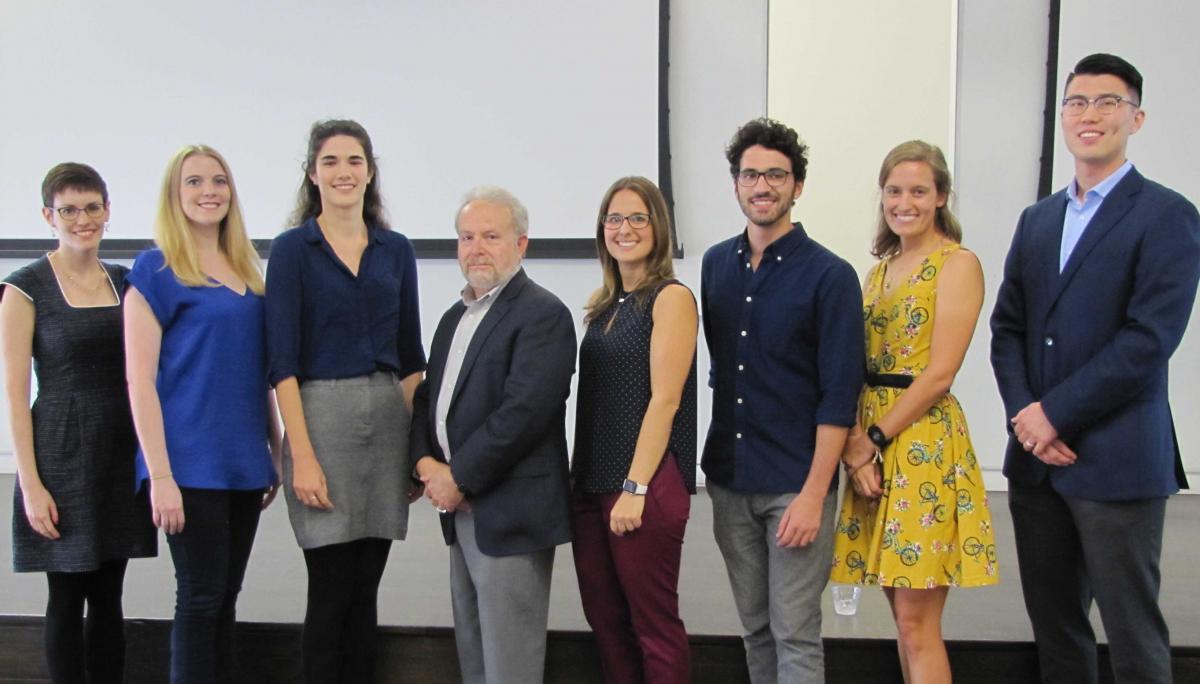Science in a Flash is a Natural Sciences event that highlights some of our exceptional graduate and postdoctoral students and graduate research in our School. These five-minute talks give a glimpse into the exciting work in the School’s portfolio. Our 2018 Science in a Flash event was held during Homecoming and featured 7 outstanding presentations given by our exceptional graduate and postdoctoral researchers.
Homecoming 2018

Thank you to each of our student presenters for your superb presentations!
Alannah Hallas
Alannah Hallas is a postdoctoral researcher at Rice University working in the Department of Physics and Astronomy with Emilia Morosan. Allanah synthesizes new materials and studies their properties under extreme conditions — temperatures as low as 50 milliKelvin and magnetic fields as strong as 14 Tesla — with the goal of discovering exotic magnetic and electronic properties.
Nicole Behnke
Nicole Behnke is a graduate student at Rice University pursuing a Ph.D. in chemistry in the Department of Chemistry under the supervision of Laszlo Kurti. Nicole’s research focuses on finding simpler and more efficient ways to make carbon-nitrogen bonds, specifically on how oxaziridines can be used to transfer nitrogen into various chemical systems.
Tian Dong
Tian Dong is a graduate student at Rice University pursuing a Ph.D. in earth science in the Department of Earth, Environmental and Planetary Sciences under the supervision of Jeffrey Nittrouer. Tian is a geomorphologist who studies how rivers and their downstream deltas distribute and store water and sediment across the landscape.
Allison Miller
Allison Miller is a postdoctoral researcher in the Department of Mathematics at Rice University, working with Shelly Harvey. Allison uses the relatively hands-on features of knot theory to answer questions about 4-dimensional topology that are very hard to access directly.
Shannon Carter
Shannon Carter is a graduate student at Rice University pursuing a Ph.D. in ecology and evolutionary biology in the Department of Biosciences under the supervision of Volker Rudolf. Shannon’s research aims to understand changes in the timing of organisms’ life cycle events, which are the best-documented biological response to climate change.
Asa Stahl
Asa Stahl is a graduate student at Rice University pursuing a Ph.D. in physics in the Department of Physics and Astronomy under the supervision of Christopher Johns-Krull. Asa seeks to understand how planetary systems form and evolve by discovering what planets are like throughout the galaxy, focusing on planets that might be suitable for life, with the aim of answering questions like: how rare is a planet like Earth?
Amy Prater is a graduate student at Rice University pursuing a Ph.D. in biochemistry and cell biology in the Department of Biosciences under the supervision of Yousif Shamoo. Amy studies the evolution of antibiotic resistance in order to understand how that resistance is mediated and then creates co-drugs that target those processes and prevent them from being a viable option for resistance.
Amy Prater
Amy Prater is a graduate student at Rice University pursuing a Ph.D. in biochemistry and cell biology in the Department of Biosciences under the supervision of Yousif Shamoo. Amy studies the evolution of antibiotic resistance in order to understand how that resistance is mediated and then creates co-drugs that target those processes and prevent them from being a viable option for resistance.
